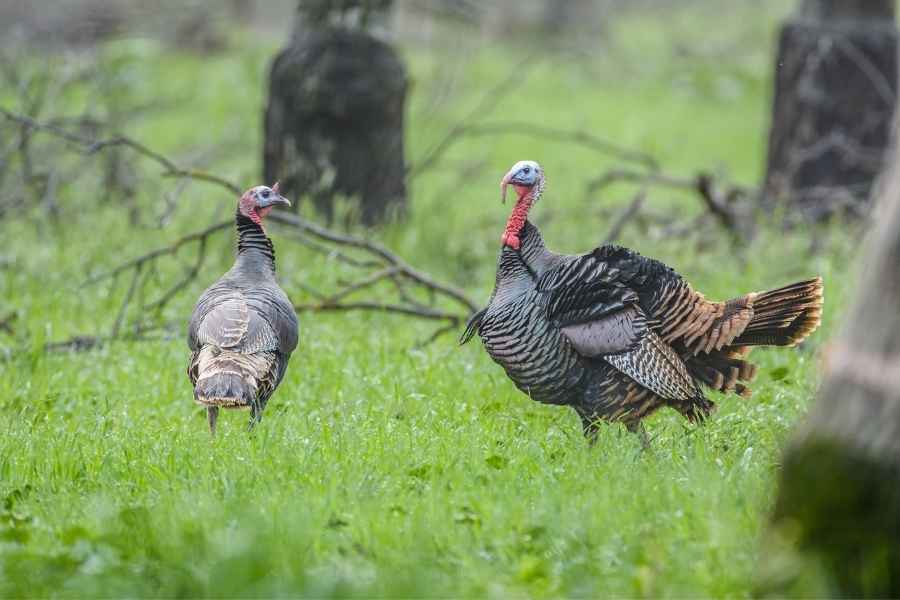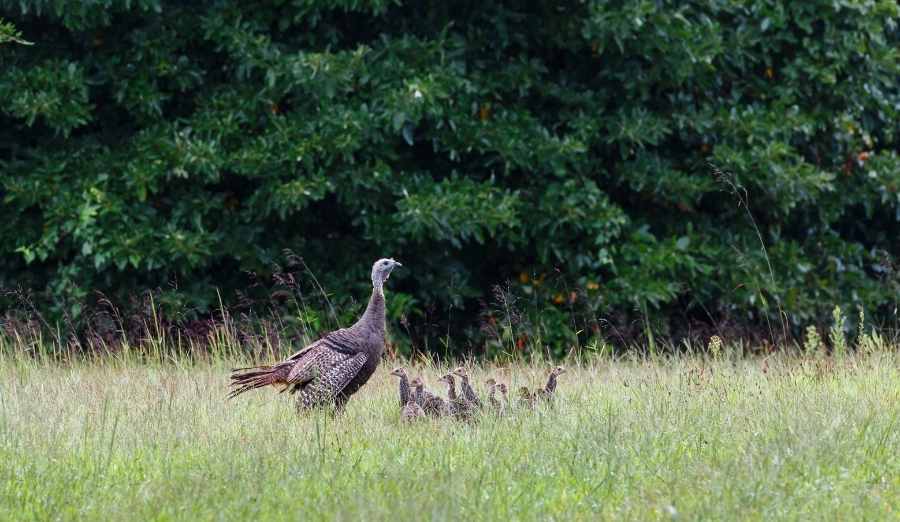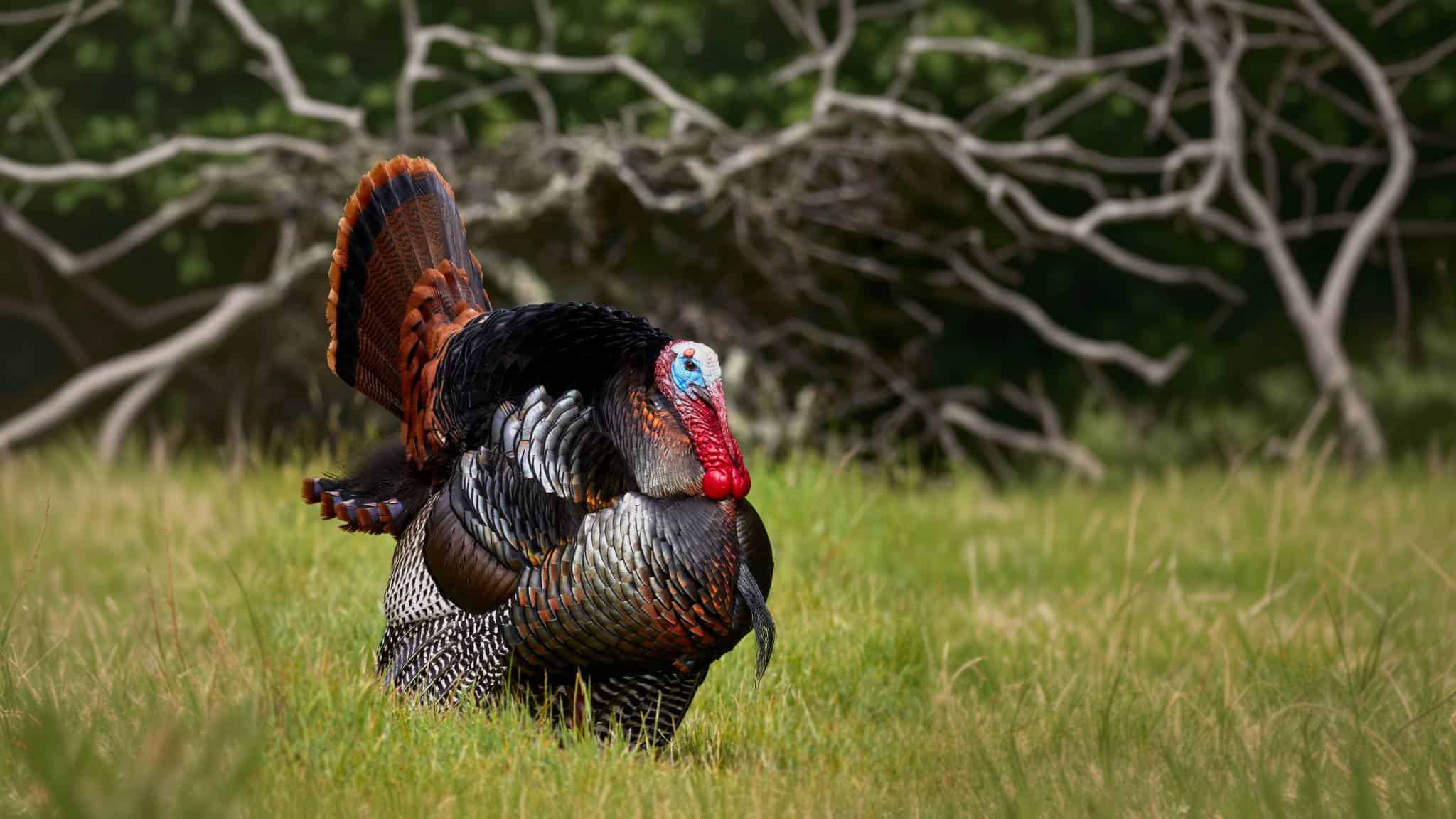The timing and intensity of wild turkey mating behaviors differ across regions and turkey species. The following chart is approximate as “north” and “south” are ambiguous and overlap each other. In general, turkey’s breeding season will be from spring to early summer. As a hunter this information isn’t as valuable as knowing when your legal hunting season starts and ends.
Mating Seasons by Region and Species
| Species | Region | Start Date | End Date |
|---|---|---|---|
| Eastern | North | April | June |
| Eastern | South | March | May |
| Rio Grande | West | February | April |
| Merriam’s | West | March | May |
| Osceola | South | Febuary | April |
Gobbling and Mating Cycles
As we all know and have learned to love, male turkeys gobble to attract and communicate with hens. This behavior usually peaks in the early morning when they are on roost. More often then not, after a gobbler hits the ground in the morning they’ll go quiet. Their gobbling is influenced heavily by weather and hunting pressure. What to pay attention to:
- Cold, rain, sleet, snow, and wind dampens gobbling and breeding activity.
- Turkeys prefer cool, calm, clear, and crisp days for increased gobbling.
- Look for high pressure, no wind, and bluebird skies

Early Season: Heavy Gobbling
Gobbling usually peaks in early season due to less toms being harvested by hunters and primarily less hens having been bred. Toms and hens are spending a lot of time together during this time of season, with subordinate toms and jakes hanging around the periphery hoping for their chance at mating. This is a great time to get aggressive with your calling and even decoying. This tends to be a difficult time to harvest older males as they are occupied with their harem. Getting a response to a gobbler with a harem may seem exciting at first but quickly turns to frustration as he will only respond to you in gobbles but not physical presence. In this situation he is saying something to the effect of “I am right here, you come to me”. Why would he leave two hens for one? A bird in the hand is worth two in the bush, even to an old tom.

Mid-Season: Solid Gobbling
When the middle of the season arrives, many hens have been bred. Keep in mind though, hens will breed multiple times with several different gobblers in order to increase their chances of hatching her eggs. A hen will move to different locations with different dominant males and breed with each one of them. The more toms she breeds with the less likely her nest is to contain infertile eggs. Remember this when you are in the woods, as a tom can be approached by a new female at any time — even mid to late season.
Most likely toms have been harvested in the area you are hunting unless you have isolated private property. Remember to not over harvest an area if you can. If I harvest a bird from a local WMA, I leave it alone the rest of the year. If I know a bird has been harvested in that area I also leave it alone. Disrupting the breeding cycle by removing too many males can devastate local poult production, leading to a decrease in an already poor survival rate and poor hunting for the coming years. Let’s all do what’s in our reach to help these birds continue into our children’s future.

Late Season: Reduced Gobbling
By this point you may be ready to throw in the towel and throw your gear into a river, but keep at it! Gobbling will continue to decrease but that doesn’t mean the hunting is bad. Gobbling will be on a steady downward trend but now can be the best time to bag a tom. Hens are becoming less willing to breed and more than likely with be on and around their nest.
Since we’re in late season, expect mature birds to be more receptive to calling and harken back to where you heard tom responding to you but he just wouldn’t move from his position. You may be able to strike that bird up now that his hens aren’t with him. Catching tom alone during this time of year is when I’ve had my best odds at 3+ year old birds. Be more conservative in your calling and a bit more patient during this time of year — they’re not as hot!

Summer
Once the heat sets in and the solstice has peaked, the days are at the longest and the polts are on the ground. Following close to mama and destined to be the next crop of jakes and jennies, this is a wonderful site to see. Sadly many won’t make it but some still will. Most of the males will have grouped back up with each other and their summer patterns will have come back into play. Females will regroup as well if their nests were raided, their poults all died, or they just didn’t breed.
Once fall comes back in, so does the pecking order. Now in gender segregated groups, these times are when gobblers will climb or fall on the hierarchy of dominance. Hens will do the same but for different reasons. The most dominant females will be the first to breed and therefore the first to nest. The sooner incubation begins and the earlier the hatching research shows the more successful the clutch will be. The most dominant toms will, of course, be the primary breeders. These dominance hierarchies are established throughout winter which then culminates in spring as birds break off into their alliances and the spring thunder begins again.






